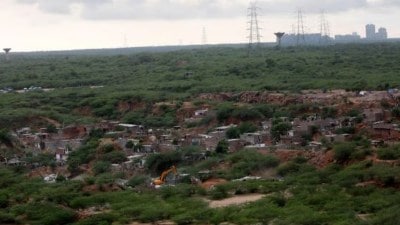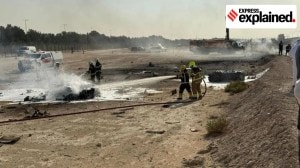The Centre has set up a high-level multi-disciplinary committee to look into Thursday’s crash of the Air India London-bound flight (AI 171) in Ahmedabad, which killed 241 people on board and many on the ground too.
While the Aircraft Accident Investigation Bureau (AAIB) is already leading a technical investigation into the crash, the committee is also expected to focus on “formulating SOPs (Standard Operating Procedures) for preventing and handling such occurrences in the future”, the Ministry of Civil Aviation said.

Addressing a press briefing on Saturday, Civil Aviation Minister K Ram Mohan Naidu said the committee would hold its first meeting on Monday, and was expected to submit its report within three months.
Soon after Thursday’s crash, the Directorate General of Civil Aviation (DGCA) had sought enhanced safety inspection of the aircraft type. On Saturday, Naidu said eight of Air India’s 33 Boeing 787 aircraft have been inspected so far. In a statement, Air India said it has completed the mandated checks on nine aircraft so far.
While the minister did not elaborate on the checks, a senior government official told The Indian Express that the inspections have not revealed any issue or adverse observation so far.
Meanwhile, Aviation Secretary Samir Kumar Sinha said the AAIB’s investigation was “going smoothly”.
Asked why the committee was constituted when the AAIB-led probe was already on, Naidu said the AAIB investigation was technical and specific to the plane crash in Ahmedabad, while the government’s high-level committee would take a more holistic approach and look at further strengthening of the aviation safety ecosystem.
Story continues below this ad
The committee, headed by the Home Secretary, includes senior officials from the Ministry of Civil Aviation, Ministry of Home Affairs, Gujarat government, the Indian Air Force, the Intelligence Bureau, Bureau of Civil Aviation Security, and Directorate General of Civil Aviation, among others.
“The committee will examine the existing SOPs and guidelines issued to prevent and handle such occurrences and suggest comprehensive guidelines for dealing with such instances in the future. The committee will not be a substitute to other enquiries being conducted by relevant organisations but will focus on formulating SOPs for preventing and handling such occurrences in the future,” the ministry said in a release late on Friday night.
Naidu said the AAIB probe will comprehensively analyse all angles and factors that could have possibly been behind the crash.
According to flight tracking data, the signal from the aircraft was lost at an altitude of just 625 feet, moments after take-off. It then descended with a vertical speed of 475 feet per minute and crashed. According to DGCA, the pilots gave a Mayday call — signaling severe distress — to the Ahmedabad airport Air Traffic Control upon take-off, after which it crashed outside the airport perimeter.
Story continues below this ad
The aircraft’s flight data recorder, which has been recovered, is expected to provide in-depth insights into what happened in the moments leading to the crash, the deadliest aviation disaster involving an Indian aircraft in decades.
FDR is one of the so-called black boxes placed on board, and records flight data on scores of parameters. The aircraft’s other black box — cockpit voice recorder (CVR) — is yet to be found. The AAIB has taken over the crash site and evidence collection is on.
The AAIB is being assisted in the probe by the US National Transportation Safety Board (NTSB), given that the aircraft was manufactured by an American company – Boeing — and was made in the US.
A UK AAIB team will also help with the investigation, and so are Boeing and other major component manufacturers like GE (engine manufacturer). According to aircraft accident investigation protocol, the probe report should be finalised within a year.
Story continues below this ad
The world has its eyes set on the probe as scores of Boeing 787 aircraft are operating all over the globe, and this was the first-ever crash involving the 787.
At the briefing on Saturday, Naidu said that while India has a strict and robust protocol on aviation safety, which has also been recognised by global bodies including the International Civil Aviation Organization (ICAO), the government still went ahead and ordered an extensive surveillance of the 787 fleet in India. He said whatever steps may be required to further enhance aviation safety would be taken without any hesitation.
In its directive soon after the crash on Thursday, the DGCA had asked Air India to carry out a number of technical checks on its Boeing 787 fleet. Air India had a total of 34 Boeing 787 aircraft before the Ahmedabad crash. Now it has 26 787-8 aircraft and seven 787-9 planes.
These enhanced checks include a one-time pre-departure check of aircraft systems and parameters, including fuel parameters monitoring and associated system, cabin air compressor and associated systems, electronic engine control system, engine fuel driven actuator and oil system, hydraulic system serviceability, and take-off parameters. Additionally, flight control inspection is to be introduced in transit inspection till further notice. Power assurance checks have also been mandated.

































